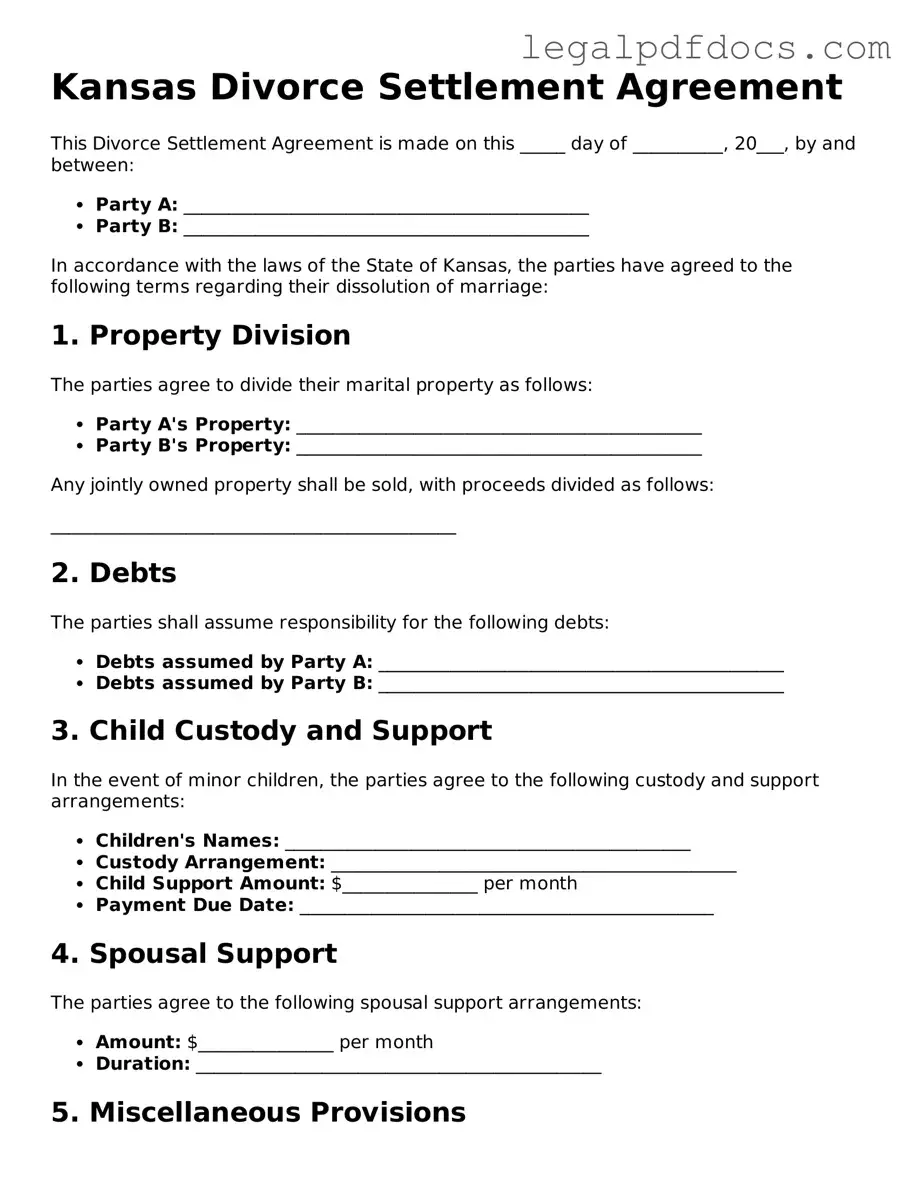Official Divorce Settlement Agreement Form for Kansas
The Kansas Divorce Settlement Agreement form is a legal document that outlines the terms and conditions agreed upon by both parties during a divorce. This form addresses key issues such as property division, child custody, and support obligations. Completing this form is an essential step in finalizing a divorce in Kansas, and you can get started by clicking the button below.
Open Divorce Settlement Agreement Editor Here
